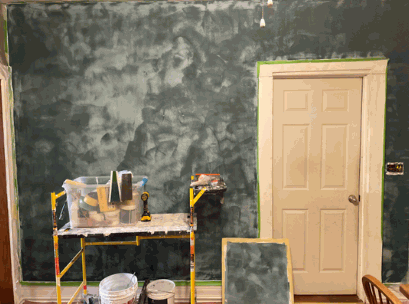Interested in adding a touch of elegance and sophistication to your space?
Venetian plastering might just be the perfect solution for you.
In this article, we will explore what Venetian plastering is, why you should choose it, and the factors that can affect its cost.
From the type of plaster used to the size of the area and the complexity of the design, we will break down the average cost of Venetian plastering and provide tips on how to find a reliable contractor and save money on your project.
Don't miss out on this valuable information!
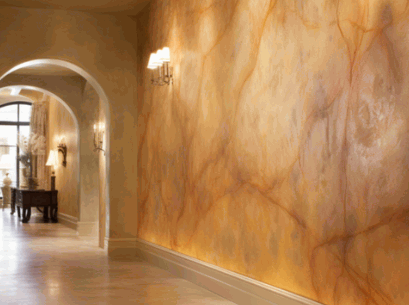
Venetian plastering is a decorative finish for walls, ceilings, and sometimes floors, originating from Ancient Greece and Egypt. It involves applying multiple layers of lime putty mixed with marble granules or other aggregates to create a smooth, polished marble effect. The final touch often includes a wax coat to enhance the finish, making it a popular choice for those seeking a luxurious and elegant surface.
This ancient technique has been passed down through generations and is renowned for its timeless beauty and durability. Traditionally, Venetian plaster was used in grand European palaces and villas to emulate the look of real marble without the weight and cost. The materials used in Venetian plastering, such as slaked lime, allow for a breathable finish that is ideal for both interior and exterior applications. The application process requires skill and precision, as each layer must be applied and polished meticulously to achieve the desired depth and sheen.
Uncover more: What Is Skimming Plaster
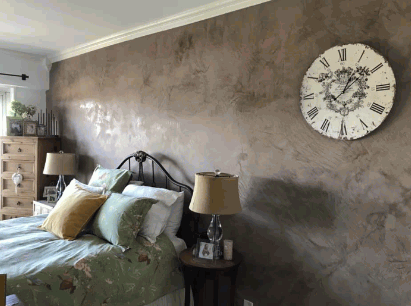
Choosing Venetian plastering for your space not only adds a touch of elegance but also offers unparalleled durability and a unique aesthetic appeal.
The use of natural materials in Venetian plaster aligns well with biophilic design principles, creating a connection to the natural world within your interiors. Embracing Venetian plaster can lead to a calming and serene atmosphere in your living or working space - a direct benefit of its association with nature. The eco-friendliness of Venetian plaster extends beyond its manufacturing process; it is also known for its long lifespan, reducing the need for frequent renovations and minimising environmental impact.
Several factors influence the cost of Venetian plastering, including the type of plaster used, the size of the area to be covered, the complexity of the design, the preparation work required, and the location of the project. Factors like the skilled application of techniques, the use of micro cement in bathrooms, and the involvement of skilled artisans can impact the overall cost due to the craftsmanship involved.
In terms of the type of plaster used for Venetian plastering, the quality and brand can significantly affect the price. High-end plasters often come at a premium compared to more basic options. The size of the area to be covered also plays a crucial role; larger spaces will naturally require more material and labour, impacting the overall cost. Intricate designs and patterns will demand more time and expertise, leading to higher expenses.
Preparation work, such as surface cleaning and priming, is essential for a successful plastering job. The thoroughness of this process can influence the final outcome and cost. The location of the project can also be a determining factor, with urban areas generally having higher labour costs than rural locations. Skilled application of techniques, like burnishing and waxing, adds finesse to the finish but may require additional time and expertise, driving up the cost.
The type of plaster chosen for the Venetian finish plays a significant role in determining the cost. While traditional plasters like Tadelakt offer a luxurious and polished finish, they may come at a higher price point due to the craftsmanship involved. On the other hand, multi-finish plasters provide a more cost-effective alternative while still maintaining a similar aesthetic appeal.
When considering plasters for a Venetian finish, it's essential to factor in not only the visual outcome but also the practicality and durability of the material.
Lime-based plasters are renowned for their eco-friendly properties and breathability, making them ideal for spaces that require moisture regulation. On the contrary, acrylic-based plasters offer a more versatile application and quicker drying time, which can be advantageous for time-sensitive projects.
The affordability and ease of maintenance of each type of plaster should also be taken into account when making a decision.
The size of the area to be covered with Venetian plaster directly affects the overall cost. Larger surfaces such as walls, ceilings, or floors will require more material and labour, leading to higher costs compared to smaller areas. Intricate designs or detailed patterns can further increase the expenses due to the complexity of the application.
For instance, a small accent wall may cost less to plaster in comparison to an entire room. The amount of preparation needed for the surface, like repairing imperfections or applying primers, can also vary based on the size of the area. In terms of larger spaces, contractors often need more time and effort to ensure a consistent finish, adding to the total cost. In contrast, smaller areas might have simpler application processes, resulting in lower expenses.
The complexity of the design in Venetian plastering directly affects the overall cost. Intricate patterns, detailed textures, or unique finishes require more time and skill to execute, resulting in higher costs compared to simpler designs. Factors like layering techniques, colour variations, and custom detailing contribute to the complexity and subsequent pricing of the plastering project.
The intricacy of the design can significantly impact the amount of materials needed for the project. Complex patterns and intricate detailing often require a larger quantity of plaster and pigments, adding to the expenses. Skilled artisans who specialise in executing elaborate designs may charge a premium for their expertise, further enhancing the overall cost of Venetian plastering.
In essence, the more intricate the design, the more resources, time, and skill are required, ultimately reflecting the total cost of the plastering work.
The extent of preparation work required before applying Venetian plaster significantly influences the final cost. Proper surface priming, repair of imperfections, and ensuring a smooth base for application are essential steps that can add to the overall expenses. Factors like the removal of existing finishes, filling cracks, or addressing structural issues can impact the preparation costs.
Preparation work is crucial in Venetian plastering projects as it sets the foundation for a flawless finish. Surface priming not only enhances the adhesion of the plaster but also ensures uniform absorption, resulting in a more consistent look. Repairing imperfections such as dents or uneven surfaces is vital to achieve a polished appearance. Properly preparing the base with the right materials and techniques is key for the plaster to adhere correctly and last longer.
The geographical location of the Venetian plastering project can affect the overall cost due to varying labour rates, material availability, and market trends.
Projects in urban areas like the London region or Surrey may incur higher costs compared to rural locations, reflecting differences in living expenses and demand for specialised artisans. This could be attributed to the higher competition for skilled professionals in bustling cities, leading to increased wages and ultimately impacting the project budget.
Material costs can vary depending on the region's access to specific resources. For instance, a project in an area with abundant local sources of high-quality plaster material may benefit from lower material expenses, while remote locations could face higher transport costs. Market trends also play a significant role, with popular trends in certain regions leading to fluctuations in pricing for Venetian plastering services.

The average cost of Venetian plastering can vary based on different pricing models, including cost per square foot, cost per hour, or cost per project.
Cost per square foot is a common metric used in Venetian plastering projects, providing a straightforward way to gauge expenses based on the area to be covered. On average, this cost can range from £5 to £12 per square foot, depending on the complexity of the design and the quality of materials used.
Alternatively, cost per hour is another pricing model often chosen by contractors for smaller projects or touch-ups. Hourly rates can vary widely, with an average falling between £31 to £55 per hour. This model is beneficial for clients with specific timelines or smaller areas requiring attention.
For larger projects or comprehensive renovations, opting for a cost-per-project approach can provide a more holistic view of expenses. This model factors in all aspects of the Venetian plastering job, including materials, labour, and additional services. On average, total project costs can range from £783 to £3913, depending on the size and scope of the project.
The cost of Venetian plastering per square foot or square metre is a common pricing metric used in the industry. Factors like material costs, labour rates, the complexity of the design, and surface preparation influence this pricing model, with higher square footage often resulting in lower costs per unit compared to smaller areas.
When estimating the cost per square foot for a Venetian plastering project, it's crucial to consider not only the raw materials but also the specialised tools and skilled labour required. The intricacy of the design can significantly impact the pricing, as more intricate patterns or textures may demand higher labour costs.
The condition of the substrate plays a vital role in cost calculations. Uneven or damaged surfaces might require additional prep work, such as smoothing or repairs, leading to increased expenses per square foot. In contrast, well-prepared surfaces may contribute to more straightforward application processes and thus lower costs.
The cost per hour for Venetian plastering services is determined by the skilled application techniques, hourly rates of artisans or contractors, and the complexity of the project.
Hourly rates play a crucial role in estimating the overall budget for a Venetian plastering project. Artisans with extensive experience and specialised training often charge higher rates due to their expertise in applying this luxurious finish. The intricacy of designs and bespoke requirements can significantly impact the time needed for application, directly affecting the cost per hour. Quality craftsmanship and precision are essential when working with Venetian plaster, as any mistakes would require additional time and resources to rectify, leading to increased hourly costs.
The cost per project for Venetian plastering encompasses a comprehensive pricing model that considers all aspects of the project, from material expenses to labour costs and finishing touches. Providing clients with a total cost estimate for the entire project helps in budget planning and ensures transparency in pricing, offering a holistic view of the financial investment required for a Venetian plastering endeavor.
Factors such as the size of the area to be plastered, the intricacy of the design, and the type of finish desired play a crucial role in determining the overall cost of the project.
The level of expertise of the artisans, the quality of materials used, and any preparatory work needed before the plastering process can impact the final price.
It's essential for clients to request detailed breakdowns of costs and clear pricing structures to avoid any misunderstandings or unexpected expenses along the way.
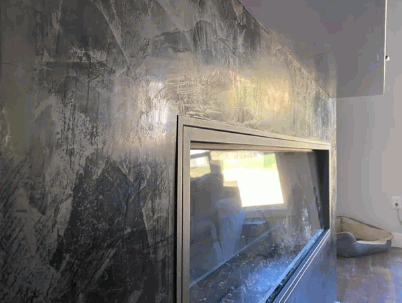
Along with the base cost of Venetian plastering, there are several additional expenses that clients should consider. These include costs related to materials such as lime putty and marble granules, labour charges for skilled application, equipment hire for specialised tools, and expenses associated with finishing and sealing the plastered surfaces.
When budgeting for a Venetian plastering project, it's essential to factor in the costs for high-quality lime putty which forms the base of the plaster, as well as the exquisite marble granules that contribute to the unique texture and finish. Labour charges from experienced craftsmen who possess the expertise to achieve the desired smooth and glossy look are another significant expense. Hiring specialised equipment like trowels and burnishing tools is essential for proper application.
The materials used in Venetian plastering projects contribute significantly to the overall cost. High-quality materials such as lime putty, marble granules, and other natural aggregates are essential for achieving the desired finish. The cost of materials can vary based on quality, quantity, and sourcing, impacting the total expenses of the project.
Aggregates play a crucial role in Venetian plastering, as they not only provide texture but also determine the final look and durability of the surface. Marble granules, for instance, add a luxurious touch and depth to the finish, creating a lustrous effect that is distinctive to Venetian plaster.
Utilising natural materials in the plaster mixture enhances the breathability and moisture-regulating properties of the surface, making it ideal for humid environments. The choice of materials influences the color intensity and variations, adding character and visual interest to the walls.
Labour costs form a significant portion of the expenses in Venetian plastering projects, reflecting the skill and expertise of artisans involved in the application process. Skilled application techniques, craftsmanship, and attention to detail contribute to the labour charges, with experienced artisans commanding higher rates for their specialised services.
Aside from the actual labour hours, the quality of work also significantly influences the final cost. In terms of Venetian plastering, the delicate blending of materials, the impeccable smoothing of surfaces, and the intricate layering of colours all require a keen eye and steady hand. This level of precision and artistry is not only time-consuming but demands a deep understanding of the materials being used. Therefore, skilled artisans with years of experience can demand a premium for their expertise in creating stunning, long-lasting Venetian plaster finishes.
Equipment hire costs may factor into the overall expenses of Venetian plastering projects, particularly when specialised tools or machinery are required for the application process. Hiring equipment such as trowels, mixers, or scaffolding can add to the project costs, necessitating careful budgeting and planning to accommodate these additional expenses.
Using the right equipment is crucial in achieving the desired finish and quality in Venetian plaster applications. Hiring specialised tools ensures that the project progresses smoothly and efficiently, contributing to a professional outcome. The cost of equipment hire must be balanced against the benefits it brings, such as saving on maintenance and storage expenses associated with owning equipment. Having access to state-of-the-art machinery through rentals can enhance the overall efficiency and effectiveness of the plastering process.
The finishing and sealing processes in Venetian plastering projects play a crucial role in enhancing the durability and aesthetic appeal of the final surface. Applying a wax coat, polishing the plaster, or using specialised sealants are common practices to protect and beautify the Venetian finish, adding to the overall expenses but ensuring a long-lasting and visually appealing result.
Finishing and sealing in Venetian plastering not only provides protection but also elevates the overall look of the surface.
By mastering these techniques and choosing quality materials, craftsmen can achieve a luxurious and timeless finish that captivates viewers with its beauty and durability.
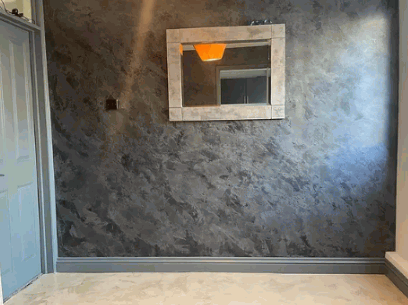
Finding a reliable Venetian plastering contractor is essential to ensure the success of your project. Look for professionals with experience in premium finishes like Venetian plaster who have a proven track record in delivering exceptional results. Seeking recommendations from sources like House Design Ideas or industry events like Build: It and Homebuilding & Renovating Shows can also help in identifying reputable contractors for your Venetian plastering needs.
Experience plays a crucial role in the quality of work delivered by a Venetian plastering contractor. Be sure to enquire about the number of years they have been in the industry and the specific projects they have worked on. A contractor with a substantial portfolio showcasing diverse Venetian plastering jobs indicates their expertise and capabilities.
Reputation is another key factor to consider when selecting a contractor for your project. Check online reviews, testimonials, and ratings to gauge the satisfaction level of their previous clients. A contractor with a stellar reputation is more likely to provide exceptional service.
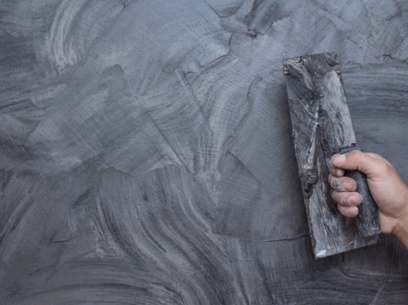
If you're looking to save money on Venetian plastering costs, consider undertaking certain aspects of the project yourself. For DIY enthusiasts, simple preparation work or application tasks can be managed independently to reduce labour expenses. Alternatively, exploring cost-effective options like hiring local artisans can help in finding budget-friendly solutions for your Venetian plastering project.
Another effective way to cut down on Venetian plastering expenses is to source materials strategically. Comparing prices and quality of essential supplies like lime putty, pigment, and wax can lead to significant savings without compromising on the final finish. Researching online tutorials or attending workshops hosted by renowned organisations in the field can equip you with valuable skills and insights for achieving professional-looking results at a fraction of the cost.
